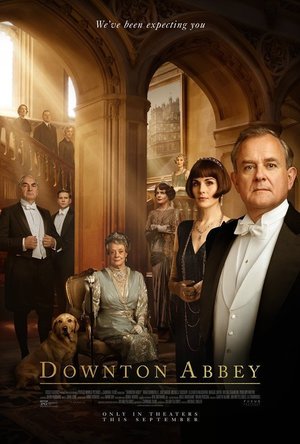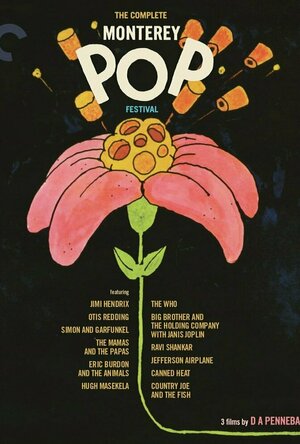Search

Assembly - Art and Design
Art & Design, Entertainment and Productivity
App
** App Store Best of 2015 ** Create stickers, icons, scenes, and other graphics using a fun and...

Dream of Pixels
Games and Entertainment
App
A very beautiful falling blocks puzzle game. "Best iPhone and iPad Games of 2012: Puzzle"...
Bob Mann (459 KP) rated Downton Abbey (2019) in Movies
Sep 28, 2021
Very little happens…. and it’s totally glorious!
The “Downton Abbey” TV show is comfortingly bland. The tales of the well-heeled Grantham family and the below-stairs antics of their servants. But for those who have followed Julian Fellowes‘ pot-boiler drama through all six seasons, and a number of Christmas specials, it’s like a favourite jumper… or rediscovering your comfy slippers just as the nights start getting colder.
But in a world where TV spin-off movies are notoriously dire, would this movie by the nail in Downton’s coffin?
Thankfully not.
It’s a glorious production! The opening of this film will, I’m sure, fill all Downton fans with utter glee. John Lunn‘s music builds progressively as a royal letter wends its way through the 1927 postal system, eventually ending up (as the famous theme finally emerges spectacularly) at the doors of Downton Abbey. (Downton is of course the gorgeous Highclere Castle near Newbury, acting as a star of the film in its own right. Somewhere I was lucky enough to visit just a couple of weeks before filming began).
The plot(s).
In a year of Thanos-crushing drama, there really is nothing very substantial going on here!
The King (George V, an almost unrecognizable Simon “Hitchhikers Guide” Jones) and Queen Mary (Geraldine James) are staying over in Downton for one night on their Yorkshire tour. This naturally sets the below-stairs staff into a bit of a tizz, as indeed it does the whole village. But their glee at involvement and recognition is a bit premature, since the royal entourage – headed by an officious Mr Wilson (David Haig) – parachute the complete gamut of staff into the location to serve the royal party, so bypassing the locals completely.
The ‘Downton massive’ are of course having none of this, and a battle-royale ensues.
Scattered as sub-plots like confetti at a wedding are a military man putting a strong arm around the potentially-risky Irish Tom Branson (Allen Leech); a family rift that erupts between Aunt Violet (Maggie Smith) and cousin (and royal lady-in-waiting) Maud Bagshaw (Imelda Staunton); a sobbing princess (Kate Phillips); an over-enthusiastic shopkeeper (Mark Addy), who is difficult to let-down gently; a plumbing emergency with romantic jealousy and sabotage involved; the sexual preferences of Barrow (Robert James-Collier) getting him into trouble; and a potential love-interest for the widowed Tom with Maud’s maid Lucy (Tuppence Middleton). (There are probably half a dozen others that I’ve forgotten!)
A huge ensemble cast.
As befits a show that has gone over six seasons, there is a huge ensemble cast involved. Inevitably, some get more air time than others. Bates (Brendan Coyle) seems to be particularly short-changed, and above stairs I thought the same was true – strangely enough – of the Crawleys (Hugh Bonneville and Elizabeth McGovern).
As for Henry Talbot (Matthew Goode), he’s hardly in it at all! Apart from some impressive camera gymnastics for his running-up-the-stairs arrival, he doesn’t make much of an impression at all. (I can only guess he had other filming commitments).
These are players that have worked together as a team for many years, and it shows.
But the acting kudos has to go to Maggie Smith who steals absolutely every scene she’s in, with genuinely witty lines – “I’ll lick the stamps myself” (LoL). Close behind though is Imelda Staunton who also turns in a very impressive performance.
Glorious photography.
The photography is fantastic throughout, with deep rich colours, pin-sharp focus and some seriously dramatic pans. A big hats off to cinematographer Ben Smithard, but also to his drone team (“The helicopter ladies”) for delivering some jaw-droppingly gorgeous shots of Highclere castle.
(By the way, I thought the picture at my local Picturehouse cinema – Harbour Lights in Southampton – was particularly stunning: I queried it with them, and they said they had changed the (very expensive) projector bulb just that day! These things clearly matter!)
Will is appeal?
If you are a Downton fan, yes, Yes, YES! I have been a moderate fan of the TV series, but went with superfans – the illustrious Mrs Movie-Man and (as a guest visitor) Miss Movie-Man. I loved it, but the two ladies were ecstatic with the movie.
Even if you have never seen an episode, it is easy to pick up and the quality of the production is so impressive I don’t think you will be disappointed.
As such, I think I need to post a blend of ratings for this one.
But in a world where TV spin-off movies are notoriously dire, would this movie by the nail in Downton’s coffin?
Thankfully not.
It’s a glorious production! The opening of this film will, I’m sure, fill all Downton fans with utter glee. John Lunn‘s music builds progressively as a royal letter wends its way through the 1927 postal system, eventually ending up (as the famous theme finally emerges spectacularly) at the doors of Downton Abbey. (Downton is of course the gorgeous Highclere Castle near Newbury, acting as a star of the film in its own right. Somewhere I was lucky enough to visit just a couple of weeks before filming began).
The plot(s).
In a year of Thanos-crushing drama, there really is nothing very substantial going on here!
The King (George V, an almost unrecognizable Simon “Hitchhikers Guide” Jones) and Queen Mary (Geraldine James) are staying over in Downton for one night on their Yorkshire tour. This naturally sets the below-stairs staff into a bit of a tizz, as indeed it does the whole village. But their glee at involvement and recognition is a bit premature, since the royal entourage – headed by an officious Mr Wilson (David Haig) – parachute the complete gamut of staff into the location to serve the royal party, so bypassing the locals completely.
The ‘Downton massive’ are of course having none of this, and a battle-royale ensues.
Scattered as sub-plots like confetti at a wedding are a military man putting a strong arm around the potentially-risky Irish Tom Branson (Allen Leech); a family rift that erupts between Aunt Violet (Maggie Smith) and cousin (and royal lady-in-waiting) Maud Bagshaw (Imelda Staunton); a sobbing princess (Kate Phillips); an over-enthusiastic shopkeeper (Mark Addy), who is difficult to let-down gently; a plumbing emergency with romantic jealousy and sabotage involved; the sexual preferences of Barrow (Robert James-Collier) getting him into trouble; and a potential love-interest for the widowed Tom with Maud’s maid Lucy (Tuppence Middleton). (There are probably half a dozen others that I’ve forgotten!)
A huge ensemble cast.
As befits a show that has gone over six seasons, there is a huge ensemble cast involved. Inevitably, some get more air time than others. Bates (Brendan Coyle) seems to be particularly short-changed, and above stairs I thought the same was true – strangely enough – of the Crawleys (Hugh Bonneville and Elizabeth McGovern).
As for Henry Talbot (Matthew Goode), he’s hardly in it at all! Apart from some impressive camera gymnastics for his running-up-the-stairs arrival, he doesn’t make much of an impression at all. (I can only guess he had other filming commitments).
These are players that have worked together as a team for many years, and it shows.
But the acting kudos has to go to Maggie Smith who steals absolutely every scene she’s in, with genuinely witty lines – “I’ll lick the stamps myself” (LoL). Close behind though is Imelda Staunton who also turns in a very impressive performance.
Glorious photography.
The photography is fantastic throughout, with deep rich colours, pin-sharp focus and some seriously dramatic pans. A big hats off to cinematographer Ben Smithard, but also to his drone team (“The helicopter ladies”) for delivering some jaw-droppingly gorgeous shots of Highclere castle.
(By the way, I thought the picture at my local Picturehouse cinema – Harbour Lights in Southampton – was particularly stunning: I queried it with them, and they said they had changed the (very expensive) projector bulb just that day! These things clearly matter!)
Will is appeal?
If you are a Downton fan, yes, Yes, YES! I have been a moderate fan of the TV series, but went with superfans – the illustrious Mrs Movie-Man and (as a guest visitor) Miss Movie-Man. I loved it, but the two ladies were ecstatic with the movie.
Even if you have never seen an episode, it is easy to pick up and the quality of the production is so impressive I don’t think you will be disappointed.
As such, I think I need to post a blend of ratings for this one.

